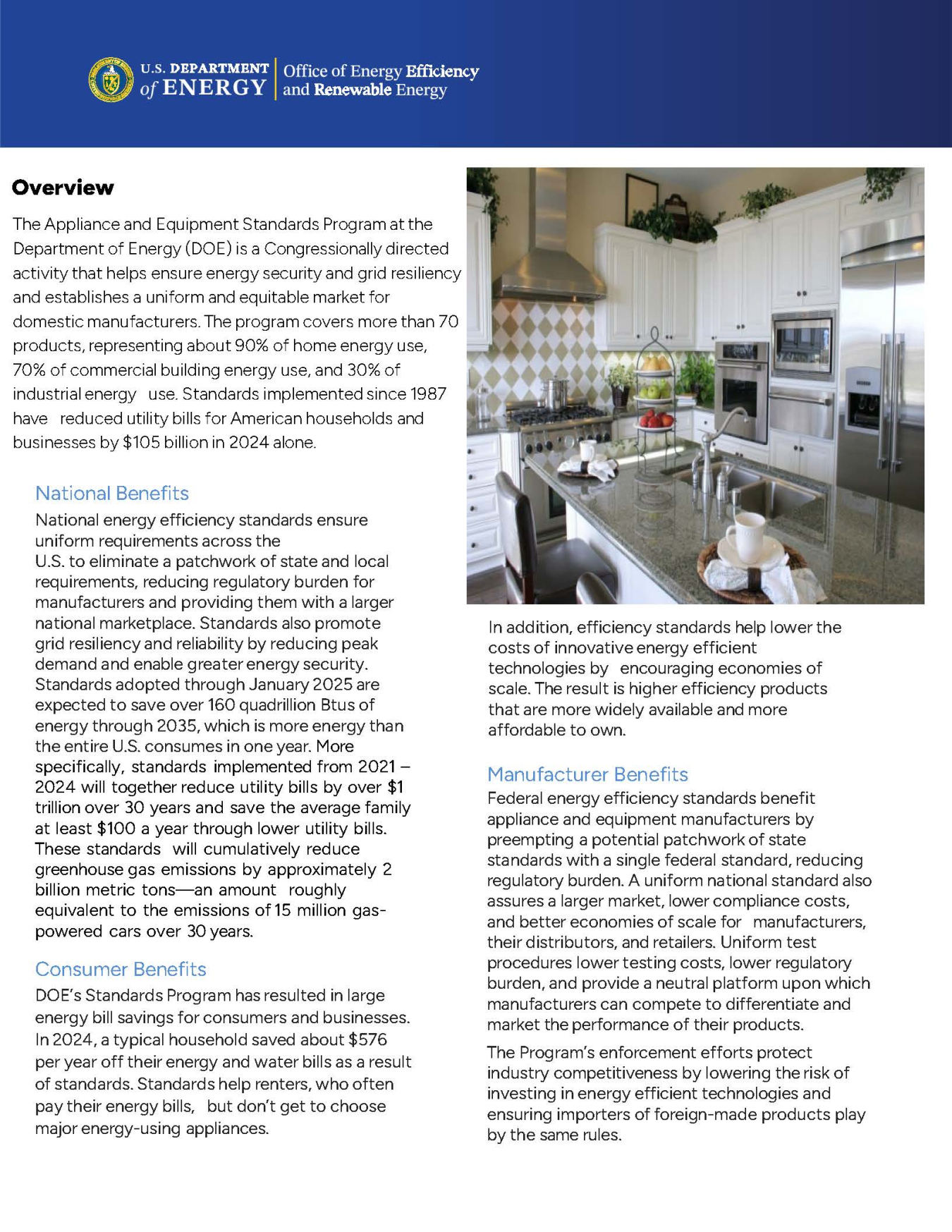Appliance and equipment efficiency standards have served as one of the nation's most effective policies for improving energy efficiency. The first standards were enacted at the state level in California in 1974. At the national level, the Energy Policy and Conservation Act (EPCA) was enacted in 1975, and established a federal program consisting of test procedures, labeling, and energy targets for consumer products. EPCA was amended in 1979 and directed the Department of Energy (DOE) to establish energy conservation standards for consumer products.
The National Appliance Energy Conservation Act of 1987 established minimum efficiency standards for many common household appliances. Congress set initial federal energy efficiency standards and established schedules for DOE to review and update these standards. The Energy Policy Act of 1992 (EPAct) added standards for some fluorescent and incandescent reflector lamps, plumbing products, electric motors, commercial water heaters, and heating, ventilation, and air conditioning (HVAC) systems. EPAct also allowed for the future development of standards for many other products.
In 2005, the Energy Policy Act (EPAct 2005) set new standards for 16 products and directed DOE to set standards via rulemaking for another five. In 2007, Congress passed the Energy Independence and Security Act (EISA 2007), enacting new or updated standards for 13 products. EISA also included a requirement that DOE maintain a schedule to regularly review and update all standards and test procedures.


